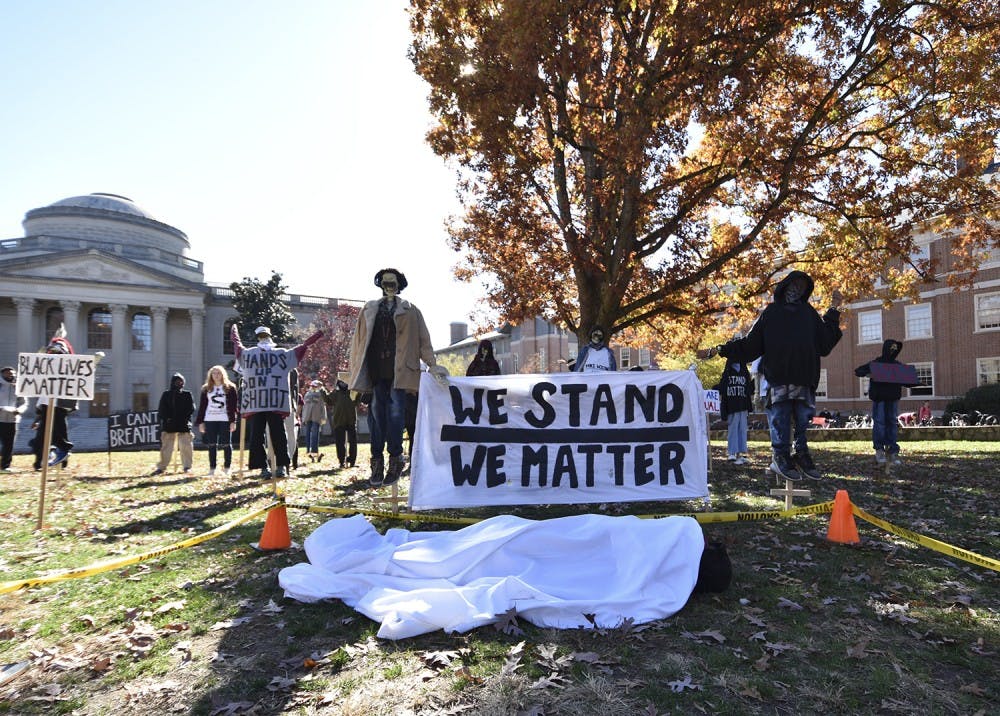“Because (Green) had used a skeleton for his project, (the class) decided to stick with the skeleton as a symbol of the genocide of the Native Americans and the killing of black men as a result of police brutality and incarceration,” said Elin O’Hara Slavick, professor of the ARTS 300 Art Majors Seminar.
Kelly Kinder, a senior and studio art major, was one of the nine students in the class who created skeletons for the exhibit. She said she thought the exhibit came together nicely due to the personal involvement of her classmates in the issues being displayed.
“There are so many people who really want to do something, but just don’t really know exactly what to do when they see these protests happening — and so I am a Yurok Native American so Standing Rock is already kind of a big issue to me — and so when we started talking about these issues, I realized there is just so much in common with them,” Kinder said.
Green said he was motivated by the protests in Charlotte over police brutality. Green, who plays football for UNC, said balancing involvement with athletics is challenging, so he decided to show his support by creating a project.
“I ended up making a project where I made an African-American young boy with handcuffs around his wrists and an American flag in his mouth with blood on it called ‘Victims of America’ and put it in the classroom and everybody liked it and wanted to push it further from there,” Green said.
Green said he wants athletes to be able to speak out and express themselves without worrying about what other people are going to say.
“We gotta protect ourselves and be safe out here, because we are victims out here, and I really feel like we just need to stand together and make things better if we can,” he said.
Kyle Mays, a post-doctoral fellow in the history department, spoke at Wilson Library Thursday evening for students and community members who wanted to learn more about the movements and the story behind the project.




